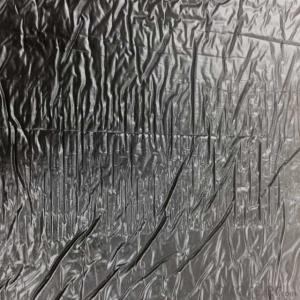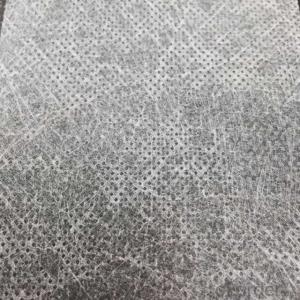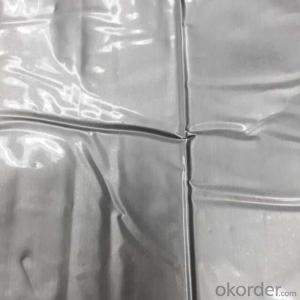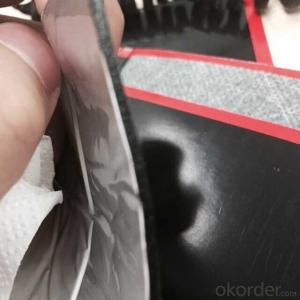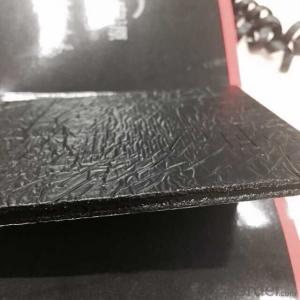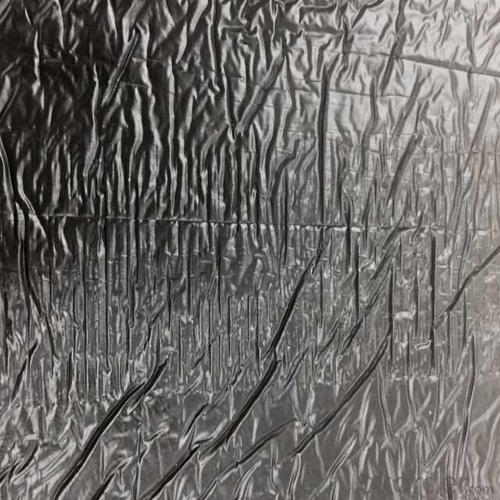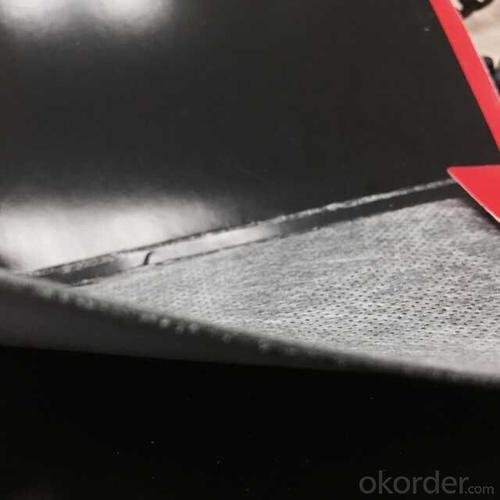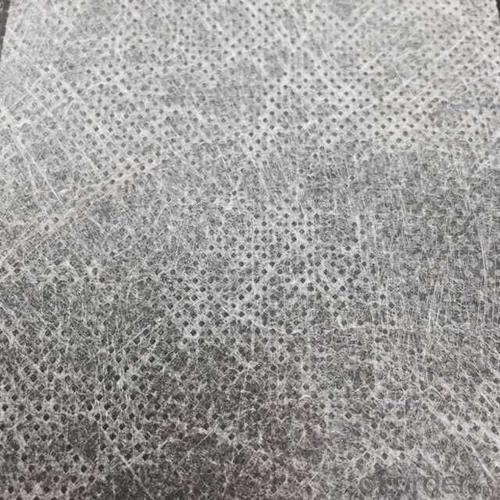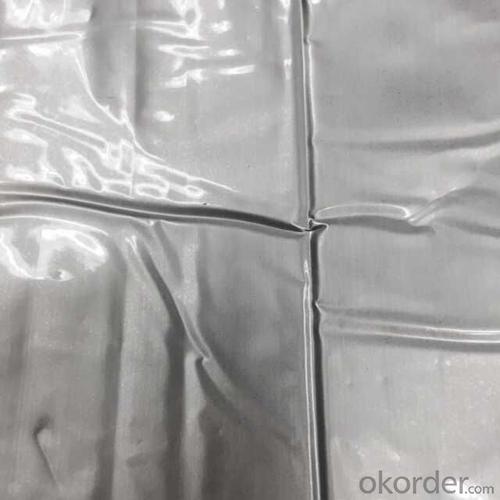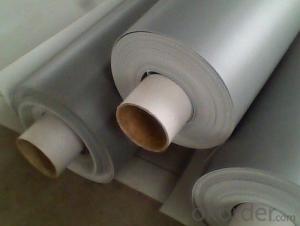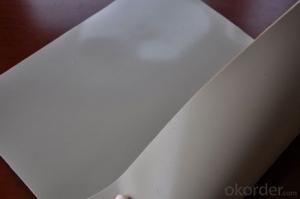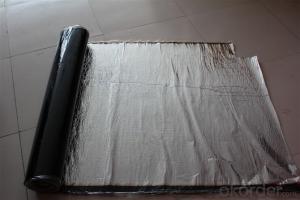Self-adhesive Waterproof Membrane CMAX Brand
- Loading Port:
- Qingdao
- Payment Terms:
- TT OR LC
- Min Order Qty:
- 2000 m²
- Supply Capability:
- 60000000 m²/month
OKorder Service Pledge
OKorder Financial Service
You Might Also Like
Specifications:
Self Adhesive Bitumen Waterproof Membrane
Introduction Self-adhesive Waterproof Membrane :
SBS(Styrene Butadiene Styrene) /APP (Atactic Polypropylene) modified bitumen membrane is made by saturating the base in bitumen, or thermoplastic elastomer (such as SBS, APP, APAO, APO), reinforced with polyester or fiberglass, finishing the upward face with polythene membrane, fine sands or mineral slates (or grains) or etc.
Specification Self-adhesive Waterproof Membrane :
Thickness | 3mm, 4mm, 5mm |
Width | 1m |
length | 7.5m, 10m, 15m, or on demand |
Base | Polyester or Fiberglass felt |
Surface | PE film, Aluminum foil, Yellow sand, Shale gravel(Schist), colored sand |
Type | could self-adhesive |
Notice | SBS modified bitumen membrane is specially applied in the cold district, APP modified bitumen membrane is more suitable for hot district with high temperature. could be self-adhesive modified bitumen membrane |
Applications Self-adhesive Waterproof Membrane :
-Roof and underground in industrial and civil buildings;
-Bridge, subway, tunnel, swimming pool, etc.
-Waste landfill, sewage plant, irrigation system, etc.
-Self-adhesive Modified Bitumen Waterproof Membrane
-Easy applying and economic on the cost saving
Advantage Self-adhesive Waterproof Membrane :
-Non-solidified, excellent elastic deformation,thus have good noise reducing;
-Easy applying and economic on the cost saving.
-Good performance on waterproof and economic sound damping.
Picture:
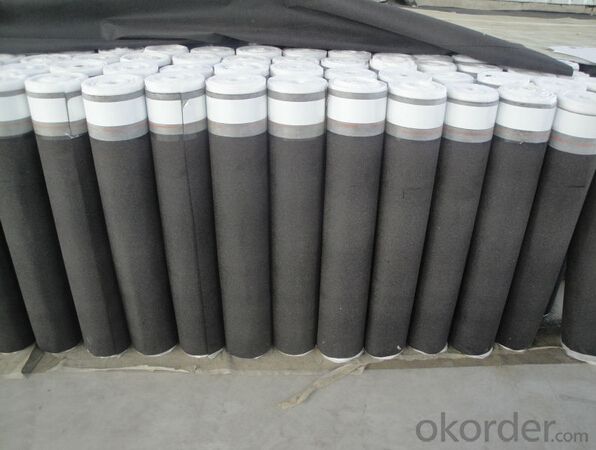
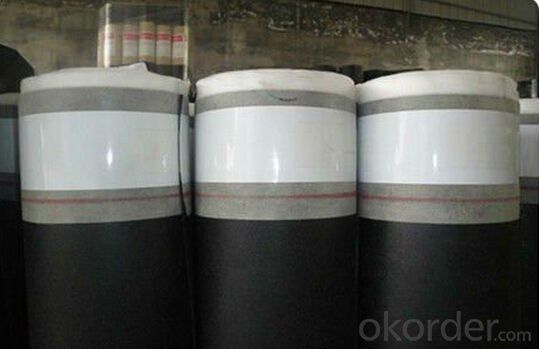
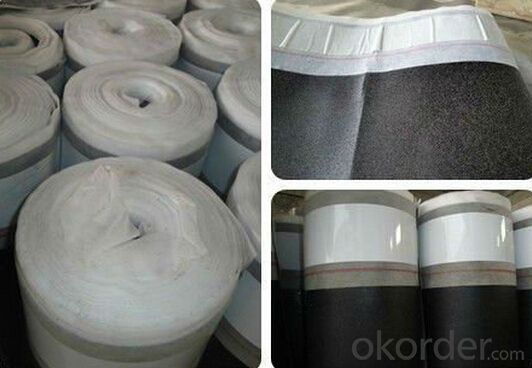
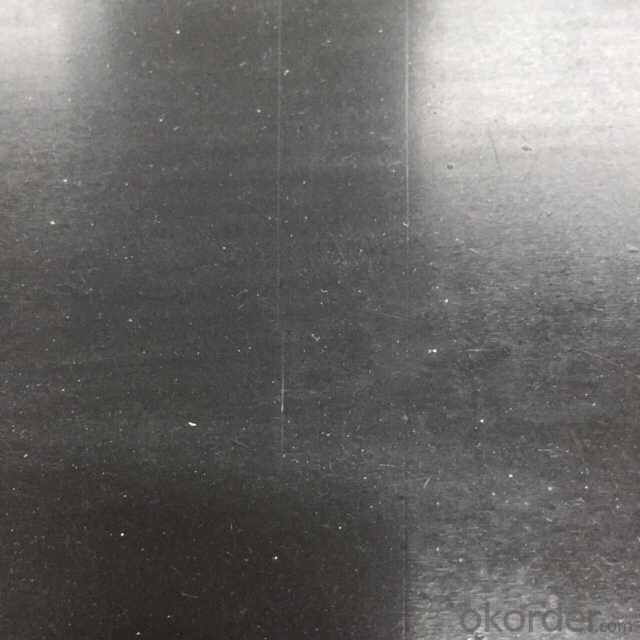
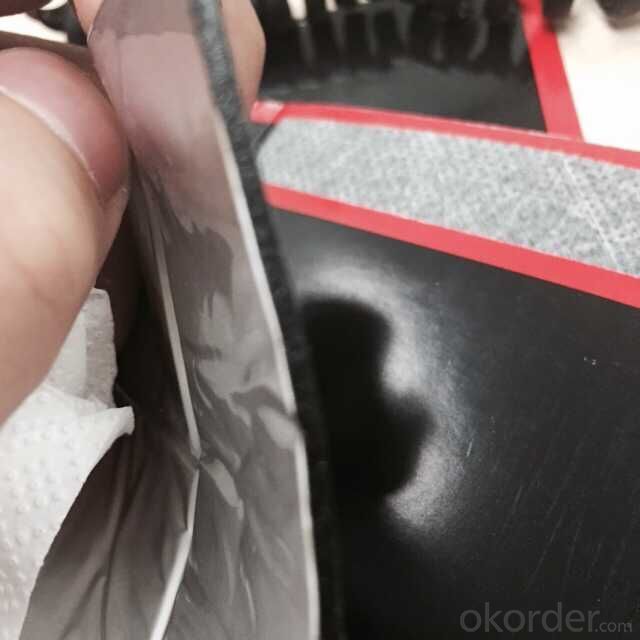
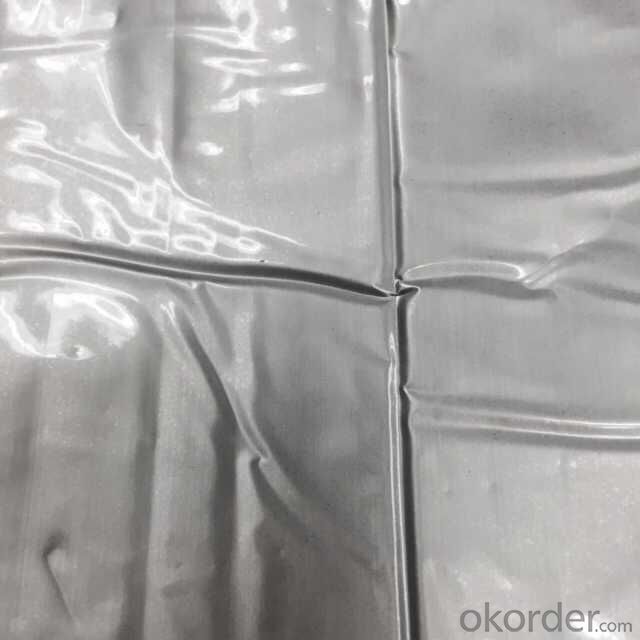


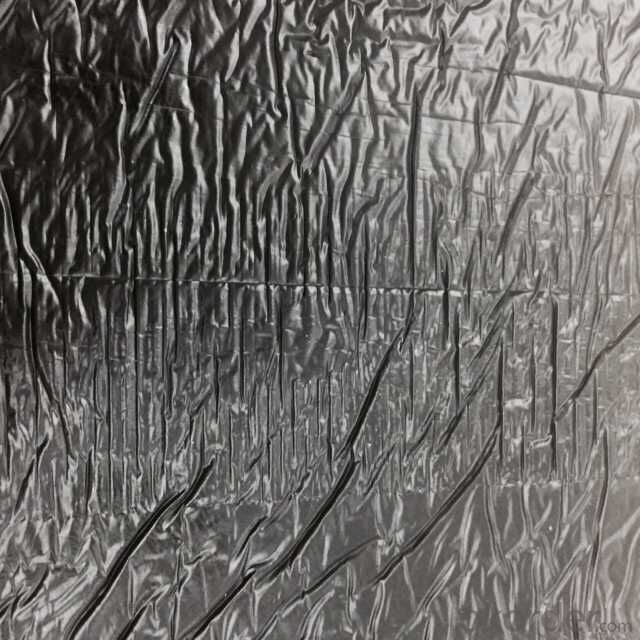
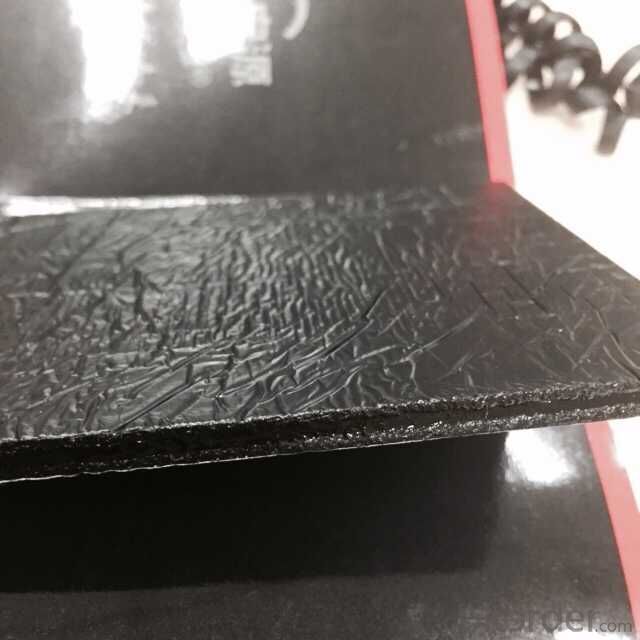
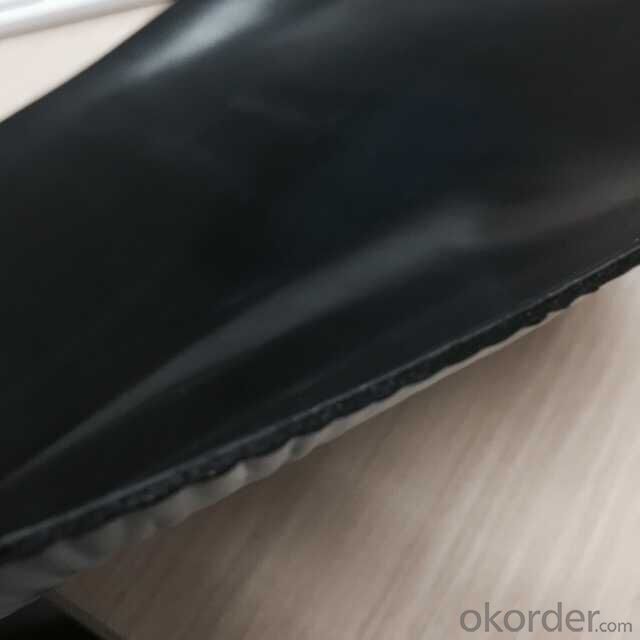
Storage Self-adhesive Waterproof Membrane :
Shelf life is 12 months. Store in a cool and dry place with original packing.
Breathable Waterproof Roof Underlay membrane (PP-PP,S-PP,S-S)
Permeable membrane is polymer modified asphalt based, with surface of high strength polypropylene fiber. Back side coated with self adhesive glue or antiskid sand. Made by special process. With excellent waterproof performance and breathable properties.\
Description | Specification | Width | Length | Thickness | |
Roof underlay | 500g/m2PP—PP | 1000mm | 30m | 0.8mm | |
600g/m2S—PP | 1000mm | 25m | 1.0mm | ||
1500g/m2S—S | 1000mm | 20m | 1.3mm | ||
Roof underlay with adhesive band | 500g/m2PP—PP | 1000mm | 30m | 0.8mm | |
600g/m2S—PP | 1000mm | 25m | 1.0mm | ||
1500g/m2S—S | 1000mm | 20m | 1.3mm | ||
It is used as the underlayment of cement tile, painted pottery watts and asphalt shingle. Also suitable for all kinds of architectural roofing, walls, underground waterproof and damp proof project.
Features Self-adhesive Waterproof Membrane :
It has good waterproofing and ageing-resistance function,not flowing at highest temperature and no crack at lowest temperature;
Easy application,no pollution,and long service life etc.
Usage Self-adhesive Waterproof Membrane :
It is widely used for industry and civil building --- the waterproof and dampproof of the roofs,basements,toilets etc;and the waterproofing of bridges,parking area,tunnels,reserviors etc.
It is specially suitable to the building waterproofing in cold area and to the buildings of changeable constructions.
Requirements for surroundings
-The base should be dry and clean. Do not work in the rainy or snowy day.
-Do not work under heavy wind(above 5 grade)
-Unsuitable for construction below 0°C
FAQ:
1. What are we supplying?
We are specialized in producing Colorful Asphalt Roof Shingle, SBS/APP modified bitumen waterproof membrane, Self adhesive bitumen waterproof membrane, PVC waterproofing membrane, EPDM rubber roofing membrane, Single Component Polyurethane Waterproof Coating, and Spray Polyurea Waterproof Coating
2. How Many years experience do we have?
We have been exported to more than 20 countries in the past 15 years.
3. How long do we usually reply your request?
We always reply our customer within 24 hours.
- Q: Can a waterproofing membrane be used in permanent or long-term structures?
- Yes, a waterproofing membrane can be used in permanent or long-term structures. Waterproofing membranes are designed to provide durable and long-lasting protection against water intrusion. They are commonly used in various construction applications such as basements, roofs, foundations, and underground structures to prevent water damage and leakage. These membranes are engineered to withstand the test of time and can effectively extend the lifespan of a structure by ensuring its integrity and preventing moisture-related issues.
- Q: Is a waterproofing membrane resistant to hydrocarbons or oil spills?
- Typically, a waterproofing membrane exhibits resistance against hydrocarbons and oil spills. Its primary purpose is to create a barrier that prevents water penetration and protects the underlying surfaces from moisture damage. These membranes are commonly made from materials such as modified bitumen, polyurethane, or PVC, all of which possess excellent chemical resistance, including towards hydrocarbons and oil. This resistance guarantees that the membrane remains intact and effective even when exposed to substances like oil spills or hydrocarbon-based liquids. However, it is crucial to note that the specific resistance may vary depending on the type and quality of the selected waterproofing membrane. Therefore, it is essential to choose a membrane that is specifically engineered to withstand the intended environment and potential chemical exposures.
- Q: Does a waterproofing membrane prevent water vapor transmission?
- Yes, a waterproofing membrane is designed to prevent the passage of water vapor, ensuring that no moisture can penetrate through the membrane.
- Q: What are the potential drawbacks or limitations of using a waterproofing membrane?
- Some potential drawbacks or limitations of using a waterproofing membrane include the potential for installation errors, which can lead to leaks and water infiltration. The membranes can also be prone to damage from sharp objects or heavy foot traffic, requiring regular maintenance and inspections. Additionally, waterproofing membranes may not be suitable for certain applications or environments, such as areas with extreme temperatures or chemical exposure.
- Q: Can a waterproofing membrane be used for water fountains or decorative features?
- Yes, a waterproofing membrane can be used for water fountains or decorative features. It is designed to prevent water leakage and protect surfaces from water damage, making it an ideal choice for these applications.
- Q: Can a waterproofing membrane be used in areas with heavy foot traffic or vehicle loadings?
- Yes, a waterproofing membrane can be used in areas with heavy foot traffic or vehicle loadings. However, it is important to choose a membrane that is specifically designed for such applications to ensure durability and longevity. These specialized membranes are typically thicker and more resistant to wear and tear. Additionally, consideration should be given to the type of traffic or loading that the area will experience. For example, areas with vehicular traffic may require a membrane with higher compressive strength to withstand the weight of vehicles. In summary, while waterproofing membranes can be used in high-traffic or heavy loading areas, it is crucial to select the appropriate type of membrane that meets the specific demands of the application.
- Q: Is a waterproofing membrane suitable for both residential and commercial applications?
- Yes, a waterproofing membrane is suitable for both residential and commercial applications. A waterproofing membrane is a versatile material that can be used in various settings to protect buildings and structures from water damage. Whether it is a residential home or a commercial building, a waterproofing membrane can be applied to foundations, roofs, walls, and other areas that are susceptible to water infiltration. It provides a protective barrier that prevents water from seeping into the structure and causing damage such as leaks, mold, and deterioration. Additionally, a waterproofing membrane can be customized to meet the specific needs and requirements of both residential and commercial applications, making it a suitable choice for any type of building.
- Q: Can a waterproofing membrane be used on planter boxes?
- Planter boxes can indeed benefit from the use of a waterproofing membrane. Typically employed to prevent water from seeping through surfaces, a waterproofing membrane safeguards the wood or other materials of the planter box from moisture damage. When applied to the interior, this membrane acts as a barrier, stopping water from infiltrating the material and potentially causing decay or rot. Consequently, the planter box's lifespan is prolonged, ensuring it remains in excellent condition for an extended period. Moreover, the waterproofing membrane aids in retaining moisture within the planter box, which proves advantageous for the growth of plants or flowers. Overall, the application of a waterproofing membrane enhances protection and durability for planter boxes.
- Q: How does a waterproofing membrane perform in areas with heavy foot traffic?
- A waterproofing membrane performs well in areas with heavy foot traffic as it is designed to withstand constant use and provide durable protection against water intrusion. It acts as a barrier, preventing water from seeping through the surface and damaging the underlying structures. Additionally, many waterproofing membranes are designed to be slip-resistant, ensuring safety for pedestrians even in high-traffic areas.
- Q: Can waterproofing membranes be used on below-grade parking structures?
- Below-grade parking structures can benefit greatly from the use of waterproofing membranes. They are frequently employed to safeguard these structures against water infiltration and potential harm. The main purpose of these membranes is to create a barrier that prevents water from penetrating the concrete and causing deterioration. To ensure the long-term durability and structural integrity of parking structures, the application of these membranes to the below-grade walls and floors is essential. Moreover, the use of waterproofing membranes also aids in the prevention of mold and mildew formation, which is a common problem in damp environments like below-grade parking structures. In conclusion, it is highly advisable to utilize waterproofing membranes in order to shield below-grade parking structures from water damage and prolong their lifespan.
Send your message to us
Self-adhesive Waterproof Membrane CMAX Brand
- Loading Port:
- Qingdao
- Payment Terms:
- TT OR LC
- Min Order Qty:
- 2000 m²
- Supply Capability:
- 60000000 m²/month
OKorder Service Pledge
OKorder Financial Service
Similar products
Hot products
Hot Searches
Related keywords
